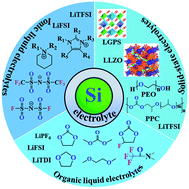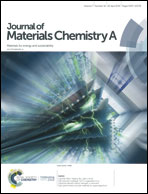Electrolytes for advanced lithium ion batteries using silicon-based anodes
Abstract
In recent years, rechargeable lithium-ion batteries (LIBs), which typically consist of a graphite anode and a lithium transition-metal oxide cathode, have been developed rapidly and widely used for various portable electronic devices, even for (hybrid) electric vehicles and grid-scale energy storage. However, the energy density of state-of-the-art LIBs is not high enough for more application extensions, such as 5G communication, robotics, and future all-electric vehicles competitive with petrol ones. Hence, various high-capacity electrode materials are being intensively investigated. Among them, Si has been regarded as the most promising candidate for the next generation of LIBs, because of its high theoretical capacity, low cost, and acceptable operation potential. Nonetheless, the drastic volume changes during the lithiation/delithiation process often lead to severe pulverization, electrical contact loss, unstable solid-electrolyte interphase, and subsequent poor electrochemical cycling reversibility, which seriously limit its commercialization. Herein, the significant progress in advanced electrolytes for Si-based anodes designed in terms of improving capacity retention and safety is systematically summarized. Additionally, the proposed mechanisms for the interphase formation between the electrolyte and electrode are also illuminated in detail. We hope that researchers can obtain a clear perspective of Si-based LIB electrolytes and be stimulated with more extensive interest in the exploration of effective electrolyte systems for various electrochemical power systems with high energy densities.

- This article is part of the themed collection: Recent Review Articles


 Please wait while we load your content...
Please wait while we load your content...